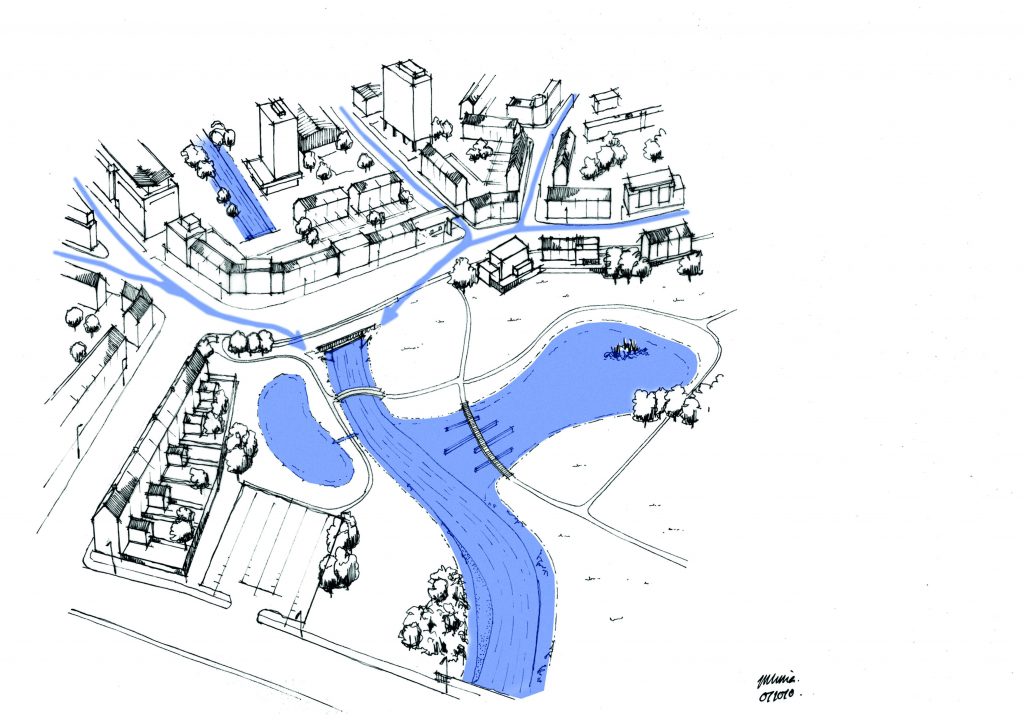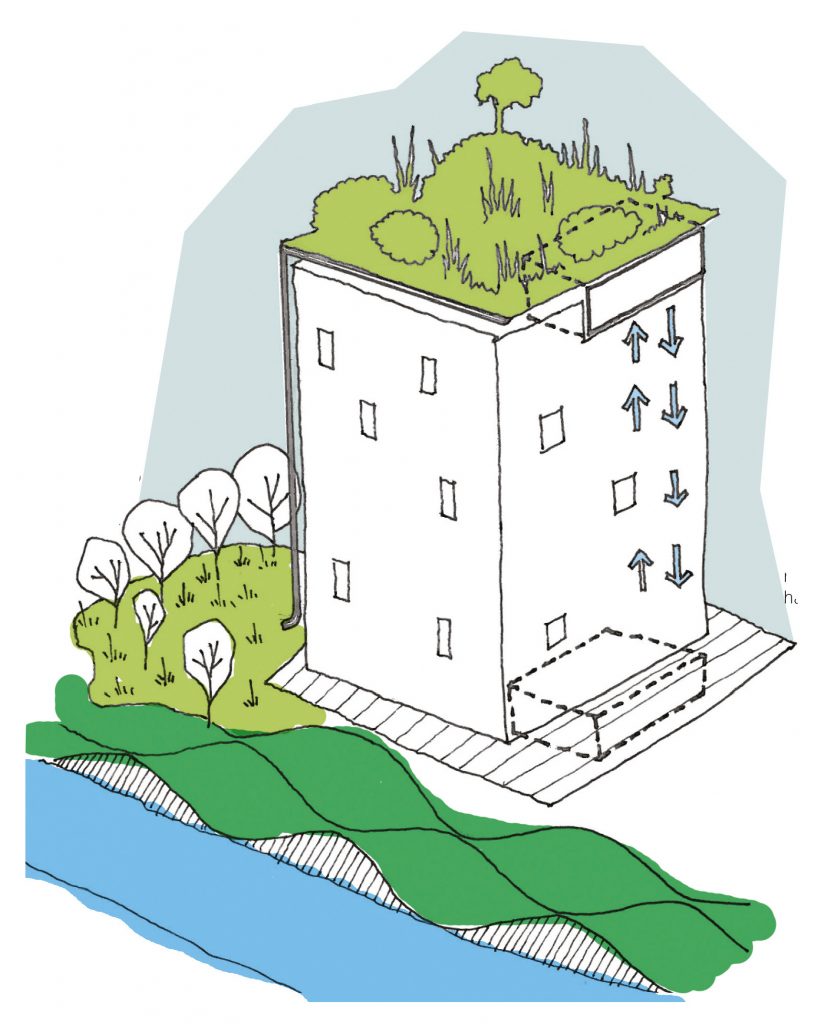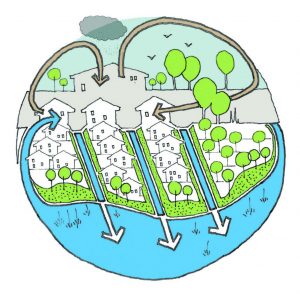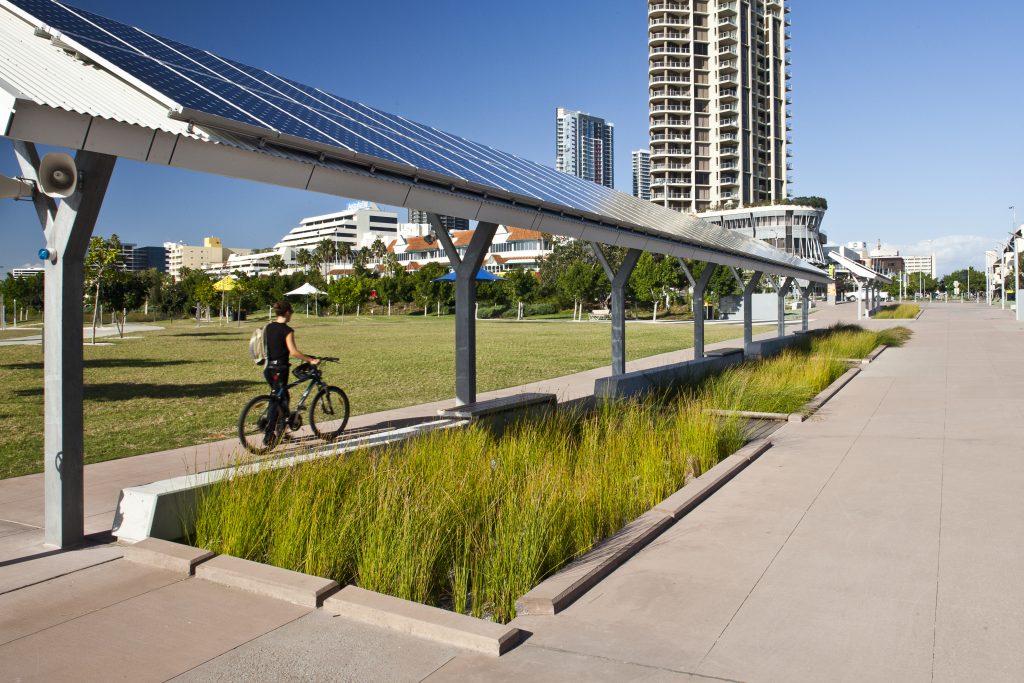Thinking differently about water
With natural water sources and drainage systems under pressure from increasing rainfall and urbanisation, sustainability expert Michael Henderson and flood risk specialist Sarah Kelly explain how water sensitive urban design can relieve some of this pressure.
 We often think of water as costly to manage, dirty or not really ‘a part’ of our lives. But through water sensitive urban design (WSUD), water can be sourced, used and reused more sustainably, reducing flooding, improving water quality and enhancing our built environment.
We often think of water as costly to manage, dirty or not really ‘a part’ of our lives. But through water sensitive urban design (WSUD), water can be sourced, used and reused more sustainably, reducing flooding, improving water quality and enhancing our built environment.
Through high quality design, WSUD connects the dots between the natural water cycle, built environment and conventional underground water systems to create a more efficient water cycle that also harnesses the potential of green infrastructure to clean and store water, naturally.
But WSUD isn’t just for new developments; enhancing water management in our towns and cities will only work by adapting what we’ve already got.
SUDS — just the start
Sustainable drainage systems (SuDS) and making space for water are two key parts of any WSUD philosophy — but they are just the start.
Lead Local Flood Authorities have responsibility to manage flooding from surface water, groundwater and ordinary watercourses and the UK’s National Planning Policy Framework requires developers to demonstrate they have investigated using SuDS such as swales, permeable paving and green roofs in new urban developments.
With a large proportion of the UK’s wastewater systems overloaded or ageing, SuDS can also be retrofitted to existing properties or urban areas, decreasing the risk of surface water flooding and improving water quality by allowing water to filter through ‘natural’ drains, such as grass and ponds.
Making space for water
In towns and cities, space for water can be created in areas that are not traditionally ‘designed’ to flood. Our developing Urban Blue Corridors scoping study with Defra identifies how blue corridors can be created in existing urban areas through small changes such as increasing kerb heights to make a road or carpark a storage area for floodwater during heavy rainfall. However, the real challenge lies in changing community perception about what should and shouldn’t flood.
Working together
The reality is that the challenges we face in managing water are likely to get so big that individual organisations cannot solve them on their own. A more water sensitive future can only be achieved through collaboration of developers, water companies, local authorities, individuals and communities. It’s about working out how to work together, and helping the community understand the importance of WSUD initiatives by engaging them and stakeholders at the start of, and throughout, the planning process.
Benefits of WSUD
For local authorities, WSUD provides effective, natural surface water management, helping to reduce flooding and improve water quality. It helps solve supply issues too by considering grey water and rainwater for non-potable water reuse, making the water cycle more integrated. WSUD also makes urban centres healthier and more attractive places to live through blue corridors and green infrastructure.
The advantages of WSUD to water companies can also be great: from the creation of a potential alternative water source — which they can charge for — to reducing the local infrastructure load resulting in less surface water flooding.
A self-sufficient future
Ultimately, we have to ask: do we carry on with business as usual and deliver more infrastructure at great cost and increase our water bills, or do we start to think differently about the ways we manage water? Perhaps the more pertinent question is can business as usual work? The answer is, probably not very well.

With a large proportion of the UK’s wastewater systems overloaded or ageing, SuDS can also be retrofitted.
What does a water sensitive block of flats look like?

Green roof
Reduces runoff, improves view and increases biodiversity
Greywater recycling from flats
Reduces water bills and the amount of water sent to sewers to be treated
Ground floor resilience
Designed and retrofitted to be flood resilient
Quiet, green space
Provides a pleasant, recreational area for residents, reduces runoff and urban heat island effect
A water sensitive neighbourhood …

The WSUD approach can be applied to a single home, block of flats or offices, a street or a whole suburb. But there can be economies of scale by applying WSUD over larger areas. For example, by applying WSUD principles to an entire site, such as the North West Cambridge Development where we are creating the UK’s first stormwater recycling scheme, the cost is around 40 per cent cheaper than doing it plot by plot.
WSUD in action
AECOM is helping the Greater London Authority, Thames Water and the newly established Old Oak and Park Royal Development Corporation develop a mass water balance for the site to devise a more integrated approach to urban water management. The solution will build on WSUD principles, including supply and use and reuse of water to pave the way for a more resilient and sustainable future, minimising impact on existing infrastructure.
Working within the constraints of the existing built environment, we also helped Lambeth Council make small changes to enhance water management, such as reinstalling grass verges along paths, and building a series of rain gardens to capture and store runoff from roads, helping to reduce flood risk across much larger areas of the borough. Our study with the council shows that up to 16 per cent less surface water is transferred to the sewer system in a 1 in 100 year event when using SuDS, such as rain gardens.







